Implementasi Binary Search Tree Pada Java
Binary Tree
Binary search tree merupakan psalah satu struktur data dimana sekelompok data memiliki satu buah data yang berada di tingkat paling atas (root). Jika setiap data disebut node, maka setiap node memiliki anak yang disebut dengan child. Pada binary tree, jumlah anak dari masing-masing node maksimal berjumlah 2 buah. Node yang tidak memiliki anak disebut dengan leaf node.
Aplikasi Sederhana Binary Search Tree
Aplikasi sederhana yang saya buat terbagi menjadi dua bagian, yaitu modul struktur data, dan juga modul aplikasi. Modul struktur data berisi logika-logika utama yang berkaitan dengan struktur data, dalam hal ini yaitu binary search tree. Modul applikasi berisi logika-logika dan proses-proses yang terjadi dalam aplikasi.
Modul Struktur Data
Berikut ini merupakan modul struktur data binary tree.
Modul Aplikasi
Berikut ini merupakan modul aplikasi implementasi binary tree
Hasil
Berikut ini hasil setelah menjalankan modul aplikasi yang telah dibuat.
Input Data
Search Data
Traverse Data
Remove Data
Retraverse Data
Exit
Source code dari program di atas dapat diakses di sini
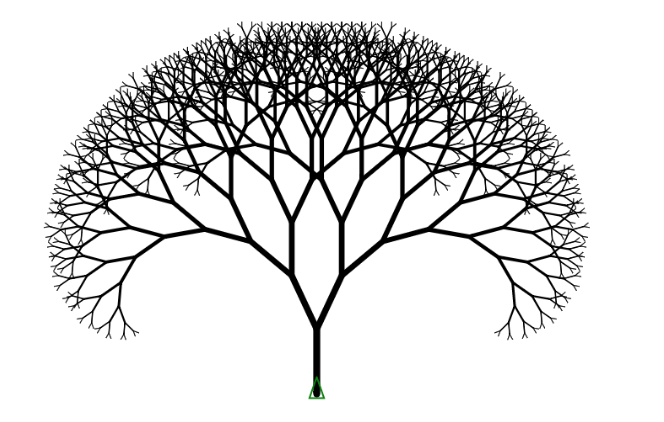

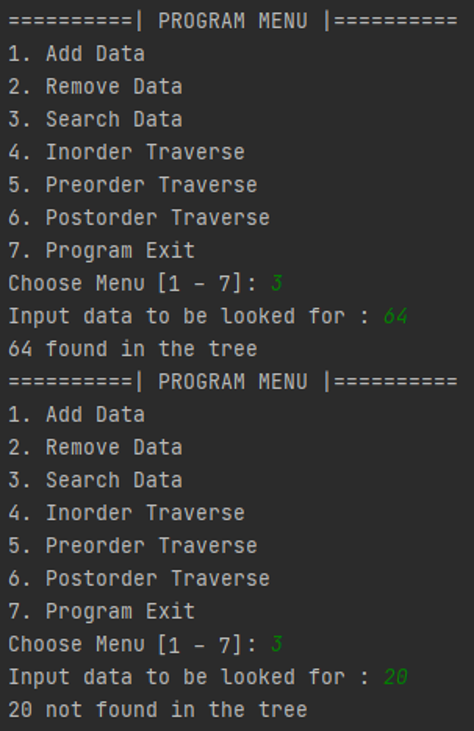
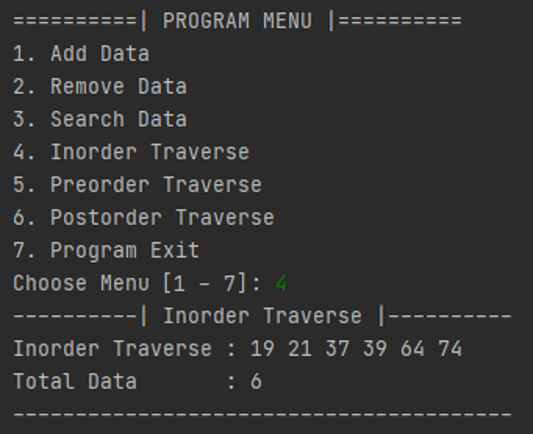

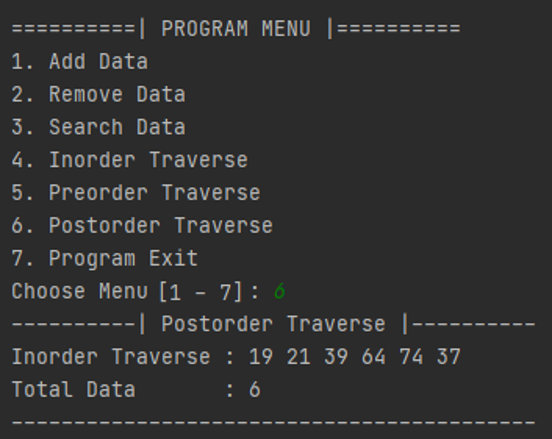
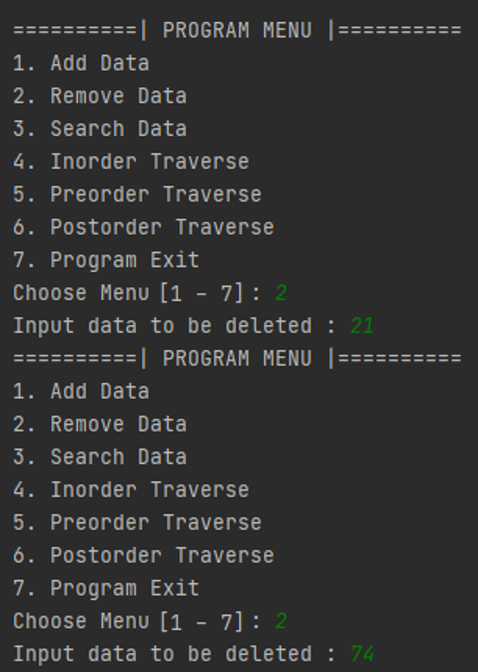
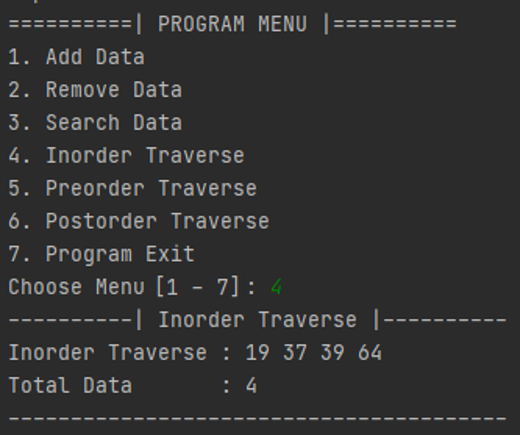
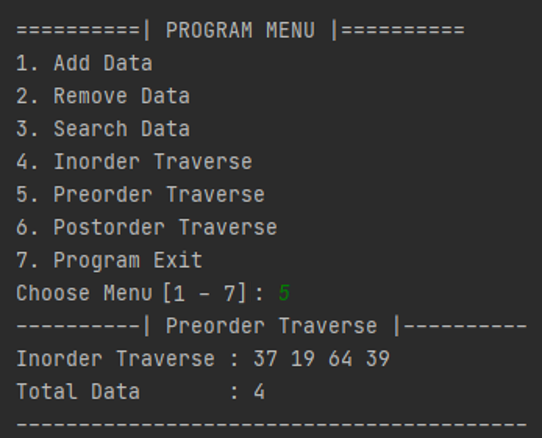
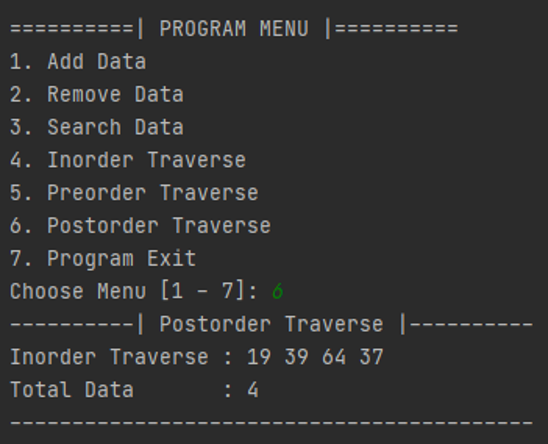
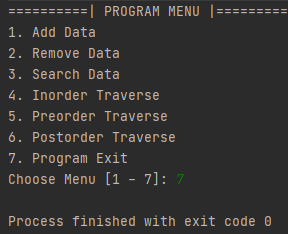

Comments
Post a Comment